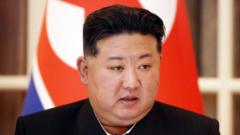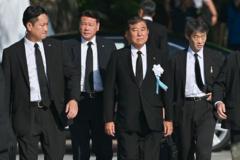June 25, 2025, 8:34 a.m. ET — In a strategic announcement coinciding with this week’s NATO summit in The Hague, the United Kingdom declared its intention to purchase 12 F-35A stealth fighter-bombers. This significant acquisition allows Britain to regain the capacity to deploy nuclear weapons from the air, thereby expanding its military arsenal.
The aircraft, upon delivery, will have the capability to carry both conventional and nuclear munitions. Currently, the U.K. maintains only one aspect of the nuclear triad with Trident submarines capable of firing cruise missiles. The introduction of aerial nuclear capabilities aligns Britain’s defense with that of France, further solidifying its capacity to respond effectively in times of crisis—both countries lack land-based nuclear weapons.
Additionally, Britain announced plans to participate in NATO's airborne nuclear operations, integrating U.S. B61 bombs stored across Europe into its military strategy. This marks the first time since the Cold War ended that the Royal Air Force will assume a nuclear role, according to government officials.
Downing Street emphasized that this move represents “the biggest strengthening of the U.K.’s nuclear posture in a generation” and enhances the European segment of NATO, particularly amid ongoing uncertainties regarding the U.S. commitment to nuclear defense for Europe against potential Russian aggression. Currently, seven NATO nations, including Germany and Italy, have dual-capable aircraft that can be equipped with American B61 nuclear warheads.
While the U.K. already operates F-35B jets, designed for aircraft carrier operations, these planes are not configured for nuclear strike missions. The addition of the F-35A jets marks a notable shift in Britain’s defense capabilities, reflecting its commitment to maintaining a robust nuclear strategy in collaboration with NATO allies.
The aircraft, upon delivery, will have the capability to carry both conventional and nuclear munitions. Currently, the U.K. maintains only one aspect of the nuclear triad with Trident submarines capable of firing cruise missiles. The introduction of aerial nuclear capabilities aligns Britain’s defense with that of France, further solidifying its capacity to respond effectively in times of crisis—both countries lack land-based nuclear weapons.
Additionally, Britain announced plans to participate in NATO's airborne nuclear operations, integrating U.S. B61 bombs stored across Europe into its military strategy. This marks the first time since the Cold War ended that the Royal Air Force will assume a nuclear role, according to government officials.
Downing Street emphasized that this move represents “the biggest strengthening of the U.K.’s nuclear posture in a generation” and enhances the European segment of NATO, particularly amid ongoing uncertainties regarding the U.S. commitment to nuclear defense for Europe against potential Russian aggression. Currently, seven NATO nations, including Germany and Italy, have dual-capable aircraft that can be equipped with American B61 nuclear warheads.
While the U.K. already operates F-35B jets, designed for aircraft carrier operations, these planes are not configured for nuclear strike missions. The addition of the F-35A jets marks a notable shift in Britain’s defense capabilities, reflecting its commitment to maintaining a robust nuclear strategy in collaboration with NATO allies.





















